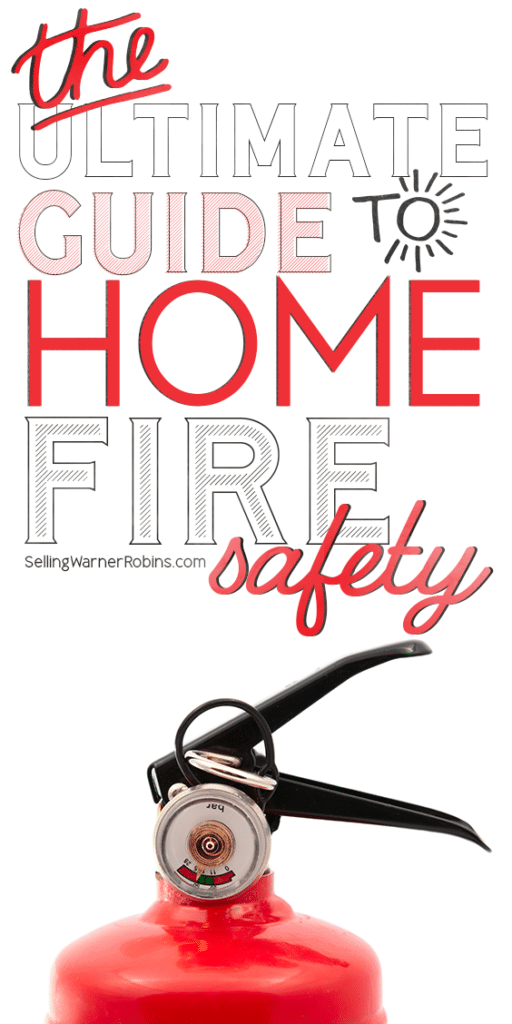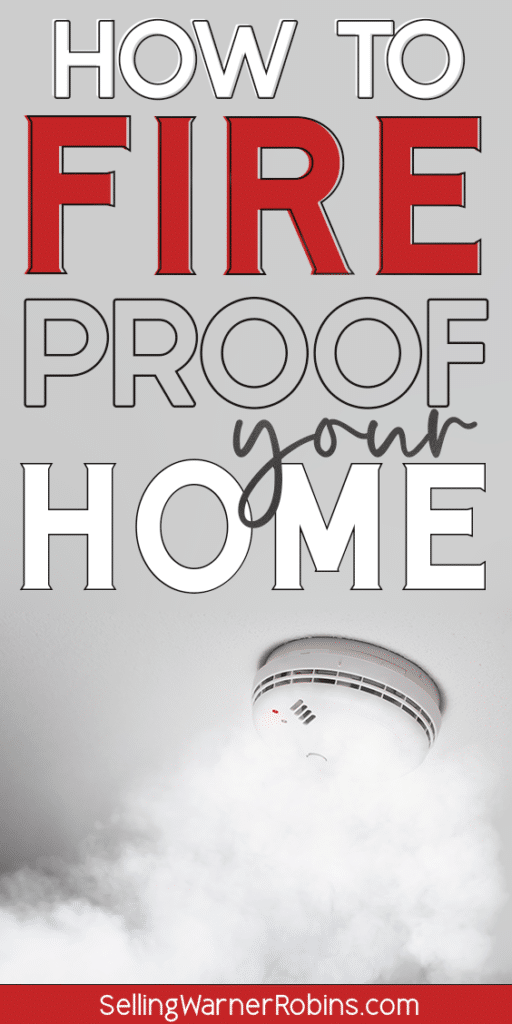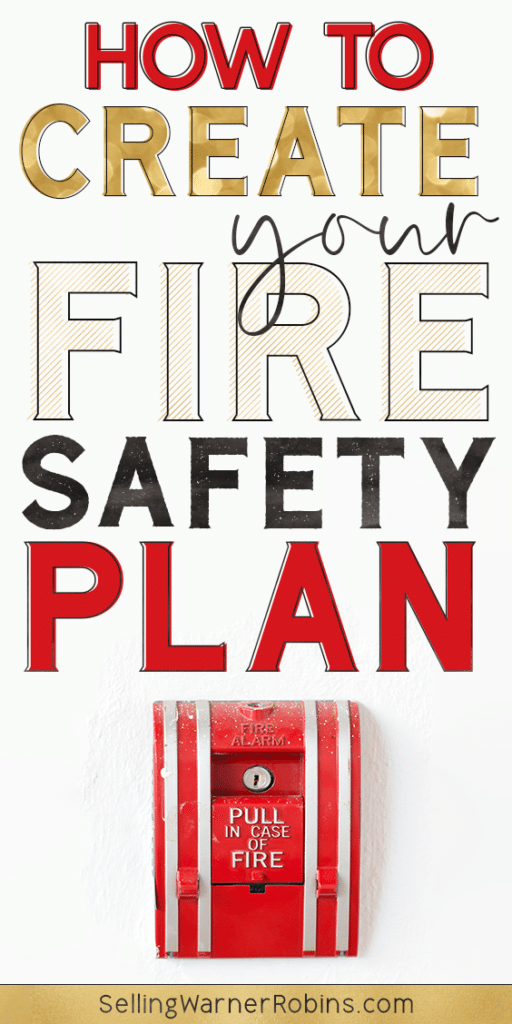The Ultimate Guide to Fire Safety in Your Home

House fires are one of the biggest dangers in the average home or apartment complex. According to the National Fire Protection Association (NFPA), house structure fires are responsible for 2,620 deaths and 11,030 injuries, and more than $7.2 billion in property damage every year. All the more reason why fire safety should be one of your top priorities. There is no substitute for having a fire safety plan in-place that each family understands and can take action on.
While it’s not possible to entirely fire-proof your home or eliminate the risk of a house fire, there are steps you can take to reduce the possibility that your home becomes one of these house fire statistics. Read on for our ultimate guide to fire safety in your home.
Understand How Fires Move

Fire is an inanimate object, but it acts a little like a living thing. It needs food and oxygen to live. Take away either, and the fire burns itself out. When it comes to protecting yourself and your home, you need to understand how fire moves so you can make the best decisions for home design and escape plans.
Food and oxygen. Keep those two things in mind. If a fire is burning out and something provides one of those two items, it will move fast to obtain the things it needs to survive. That means an open door or air conditioning vent can provide the perfect path for flames to spread.
You also need to understand how smoke moves. Staying on your feet might seem like the easiest way to escape, but smoke rises. Standing tall will leave you choking and gasping for air. Crawling under the smoke is your best chance of escape.
Smoke and Carbon Monoxide (CO) Detectors
The best — and easiest — thing you can do to protect yourself and your home from fire is to install smoke and carbon monoxide detectors in every room.
Smoke detectors, depending on the model, detect smoke, heat, or both to determine if there is a fire in the home. Regardless of the sensitivity and model, you should check the batteries once a month to ensure they’re still functioning and replace them every six months, whether they’re low or not.
Carbon monoxide detectors help keep you safe by alerting you to high carbon monoxide (CO) levels in your home. CO is dangerous to inhale, but it’s also odorless and invisible. Without a CO detector, you’d never know it was there until it’s too late.
Like smoke detectors, test your CO detectors every month and replace the batteries every six months.
Careful Cooking, Inside and Out
Mistakes in the kitchen and with exterior cookers are among the most common causes of house fires. There are lots of things that could trigger a fire in the average kitchen, from the oven and stovetop to the circuits that power the appliances.
The danger in the kitchen isn’t the fact that you might start a fire. It’s the fact that people set their food up to cook and walk away from the kitchen that causes the problem. Fires catch and spread quickly. Leaving your stove or oven unattended for any length of time increases the risk that something will catch fire.
You also need to know what to do — and what not to do — when it comes to putting out fires in the kitchen. Grease and electrical fires — two of the most common types you might find in the kitchen — can’t be extinguished with water. In fact, water will make the situation worse.
If you’re grilling or frying outside, make sure you keep all heat sources at least 3 feet away from your house, and keep appropriate fire extinguishers handy in case of an uncontrolled fire.
Clean Your Gutters Twice a Year
Fires don’t just start inside the home. Exterior factors can contribute to these housefires as well. Your rain gutters, for example, provide the perfect place for kindling to collect during the dry season. All it takes is a spark or a bit of reflected sunlight to set the entire mess ablaze.
Take the time to clean out your gutters at least twice a year — more often if you have a lot of overhanging trees. In addition to removing a fire hazard, regular cleaning can prevent your gutters from getting weighed down by debris, potentially damaging your roof and gutters when they become waterlogged and start separating from the rest of the structure.
Be Smart With Space Heaters

Space heaters are a valuable tool if you don’t have central heating and air, are having trouble with your heating system, or you’re trying to heat an area your HVAC system doesn’t reach. They’re also one of the most common causes of house fires, especially when misused.
Always keep space heaters at least 3 feet away from everything except the floor they’re sitting on. This means 3 feet from bedding, walls, and anything that might be combustible.
Don’t leave your space heater on when you leave the house or go to sleep. If you have the option, invest in a heater model that will automatically shut off if it gets tipped over to reduce the potential fire hazard.
Finally, to reduce the risk of burns, keep pets and children away from space heaters when they’re in operation.
Have Furnace and HVAC Systems Serviced Annually
Even if your furnace or heater is working perfectly, when it comes to fire prevention, it is essential to have your HVAC system inspected or serviced annually. Small problems that you might not notice at a casual glance — or without years of HVAC experience — can crop up and potentially cause a house fire.
Schedule a service appointment during the off-season. Not only will it be easier for you to get an appointment, but it may also be more affordable because you won’t be competing with the emergency calls from people who waited until the temperature started dropping to figure out their heater isn’t working.
Store Flammable Materials Properly
We often keep flammable materials in our homes, from cleaning fluids and polishing materials to gasoline for lawnmowers and other powered garden tools. When stored and used properly, these materials don’t present additional risks. It’s improper use and storage that increases the risks of housefires, but there steps you can take to reduce them.
For flammable materials, make sure you’re storing them in sheds or garages, outside of the main house. Keep them closed when not in use, and only store them in their original containers.
For fuels like gasoline, make sure you’re using a container approved for the storage of gasoline. Keep it in a well-ventilated area, and store it away from any ignition sources. That includes the obvious, like flames, and the less obvious, like sunlight or electrical sparks.
You don’t need to run away from flammable materials or throw them all away to keep your house safe. You just need to ensure they’re stored properly and in their original containers, or containers certified for flammable storage.
Install or Upgrade Ground Fault Circuit Interrupters (GFCI)
Modern homes come with ground fault circuit interrupters, or GFCIs, in kitchens, bathrooms, and anywhere else electricity and water might cross paths. A wet electrical socket can cause a short circuit. In turn, this can spark a fire that could consume your home.
A GFCI monitors the current flowing through a circuit. If it detects any sort of imbalance, it interrupts the circuit, cutting off power to the outlet until the issue is resolved.
If you live in an older house, your bathrooms and kitchen may not have GFCIs installed. These sockets weren’t required until 1971, so if your house was built before that, chances are good there aren’t any GFCIs where they need to be.
You can install them yourself if you have experience working with electrical circuits. Otherwise, we strongly recommend hiring a professional electrician to install them in any room where electricity might encounter water.
Stock Up on Fire Extinguishers

If you catch a small fire quickly enough — and have the right fire extinguisher — you can put it out before it causes too much damage. There are five different types of fire extinguishers, each with its own unique uses:
- Class A extinguishers put out solid material fires, which means you could use them for a trash can fire or a campfire in your yard.
- Class B fire extinguishers put out burning flammable liquids and gas.
- Class C are designed for energized electrical fires.
- Class D fire extinguishers are designed to put out metallic fires, such as those caused by magnesium or sodium.
- Class K extinguishers will put out cooking fires that might involve animal or vegetable fats.
While you might not need a Class D extinguisher unless you’re working in a lab, having a class K in your kitchen and a class A, B, or C in the rest of your house could make an enormous difference.
If you do have fire extinguishers in your home, you need to have them inspected and recharged or replaced on a regular basis, even if you don’t use them. Make sure everyone knows how to use the fire extinguishers you have in your home, as well.
Create and Practice Your Fire Escape Plan
Whether the fire starts while you’re asleep or it quickly gets out of hand, the best thing you can do is escape.
Get everyone out of the house as quickly and efficiently as possible. The easiest way to do that is to create an escape plan, and then practice it regularly with every member of your family — including the children.
It’s essential that everyone knows where to go and how to escape from the house, no matter what room they’re in or what time of day it is.
Once you have an escape plan in place, make sure you practice it a few times a year. Random practice is better than scheduled, simply because fires don’t happen on a schedule. Set off your smoke detector with the test button or just start yelling “Fire!” and then escape the house and regroup. If someone has an issue with the escape plan, this is the time to address it.
Teach Children Not to Hide
This is an important lesson for any children in the household. Teach them not to hide if there’s a fire. It’s tempting to crawl under the bed or hide in a closet when something scary happens, but in a house fire, that can make it difficult or even impossible for firefighters or emergency responders to find you.
Teach them to stay low, cover their nose and mouth with a wet cloth, and stay visible if they can’t escape immediately. Ideally, you’ll want to teach them to get out of the house. But if that isn’t possible because fire is blocking their path, they need to make it as easy as possible for firefighters to find them when they enter the house.
Fire Safety in Everything
Fire safety is everyone’s responsibility, as is knowing how to prevent house fires and how to escape them if they do occur. Make fire safety your priority in everything you do, from mowing the lawn and properly storing fuels to cooking dinner at the end of a long day.
Don’t take fire safety for granted. Fire can move and behave much like a living thing, seeking out the food and oxygen it needs to survive. Treat it as such, respect it, and it will serve you well. Neglect or disrespect it and it will bite.
Preventing a fire is your best option. Putting it out before it becomes too big is next. Finally, if those two options don’t work, escaping becomes your last resort. Be prepared for all of these contingencies and you’ll never be caught off-guard.
Fire Prevention and Preparation
Whether you are in upstate NY, on the west coast, in the heartland, or even in my neck of the woods in Warner Robins Georgia, you should be acutely aware of the devastation that fire can cause. At a minimum, please set aside time in October, which is designated as Fire Safety Month, to inspect and protect your home…Make sure your family is prepared in case of fire!
Here are 10 simple guidelines to help you avoid fires and reduce the risk of injury should one occur:
1.) Smoke Alarms – install a smoke alarm on every level of your home and test it monthly
2.) Prevent Electrical Fires – Don’t overload circuits or extension cords. Cords and wires should never be placed under rugs or in high traffic areas. Avoid loose electrical connections by checking the fit of the plug in the wall outlet.
3.) Keep Plugs Safe – Unplug all appliances when not in use. Follow the manufacturers safety precautions.
4.) Alternate Heaters – Make sure there is ample space around any portable heating unit. Anything that could catch fire should be at least three feet away. Inspect your chimney annually and use fire screens to help keep any fires in the fireplace.
5.) Fire Safety Sprinklers – When combined with working smoke alarms, home fire sprinklers greatly increase your chance of surviving a fire. Sprinklers are affordable and they can increase property value and lower insurance rates.
6.) Create An Escape Route – Create and practice your escape plan with your family from every room in the house. Practice staying low to the floor and checking for hot doors using the back of your hand. It’s just like a routine school fire drill – but in your home.
7.) Position Appliances Carefully – Try to keep TV sets, kitchen and other appliances away from windows with curtains. If there is a wiring problem, curtains can spread a fire quickly. Additionally, keeping your appliances away from water sources (like rain coming in from windows) can help prevent wiring damage which can lead to a fire.
8.) Clean Dryer Vents – Clothes dryers often start fires in residential areas. Clean the lint filter every time you start a load of clothes to dry or after the drying cycle is complete. Make sure your exhaust duct is made of metal tubing and not plastic or foil. Clean the exhaust duct with a good quality dryer vent brush to prevent blockage & check for lint build-up behind the dryer at least twice a year.
9.) Be Careful During the Holidays – If you fill your home with lights during the holiday season, keep them away from anything that can easily catch fire. Check all of your lights prior to stringing them up and dispose of anything with frayed or exposed wires.
10.) Conduct Regular Inspections – Check all of your electronic equipment and wiring at least once a month.
Additional Fire Safety Resources
Taking every precaution to ensure you and your family’s safety is paramount. For more details about how you can proactively be better prepared in the event there is a fire in your home, check out all the resources offered by the U.S. Fire Administration.
Take Fire Safety Seriously and Protect Your Loved Ones
About Anita Clark Realtor
Anita Clark has written 672 posts on this blog.
by Anita Clark Anita is a residential Real Estate Agent in Warner Robins Georgia, with Coldwell Banker Access Realty (478) 953-8595, aiding buyers and sellers with all their real estate questions on her Warner Robins blog.




